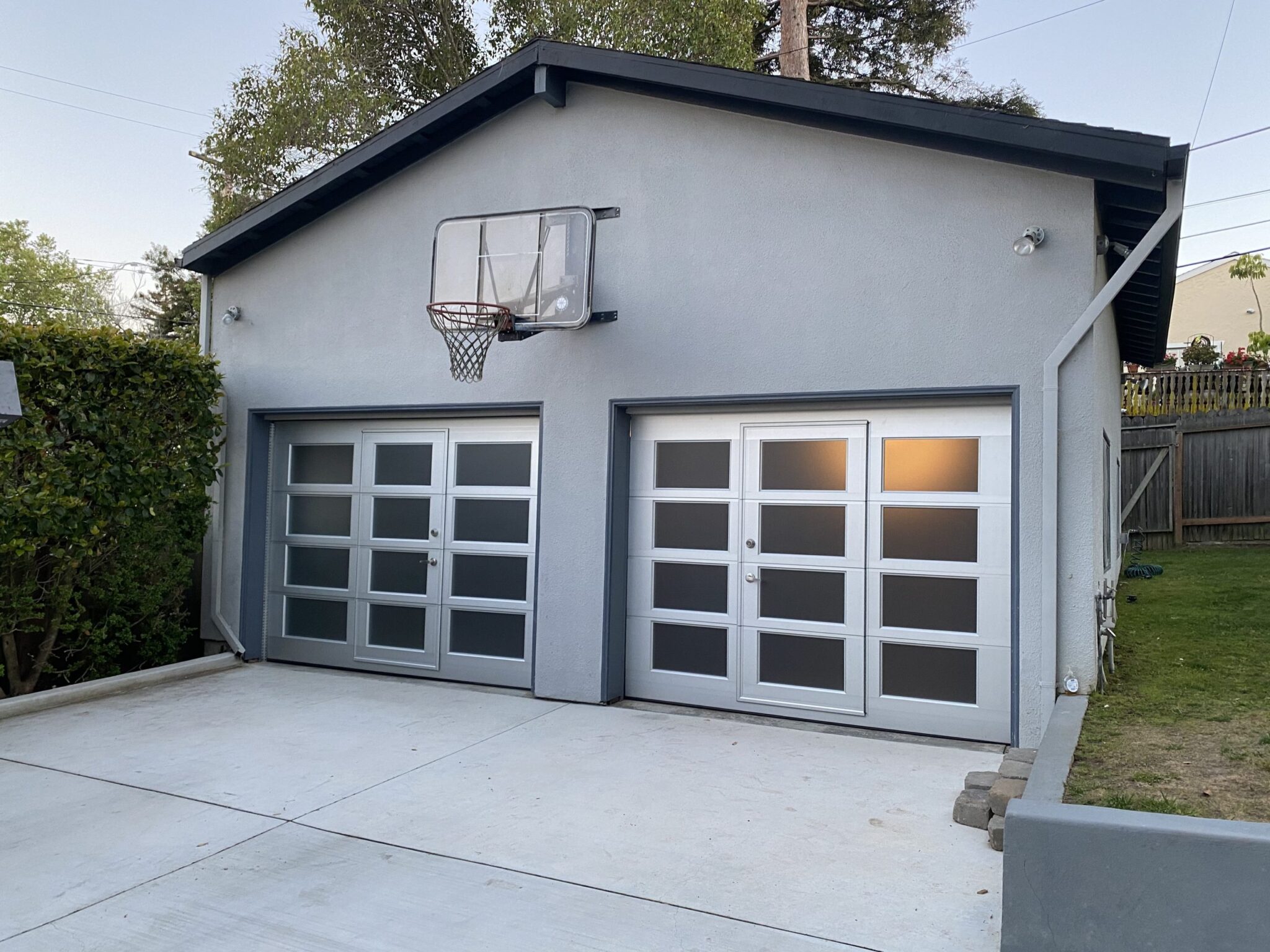
One of the most preferred design choices is to have a garage directly in front of your home. But it is not the only way to improve curb appeal.
There are many garage types that you can choose from. Some are attached and others are separate. Whether you choose to build an attached or detached garage, it is important to remember some basic things that will help you get the most out of your new structure.
First, determine the location of your garage. If you aren't sure where the garage will go, you can have a professional measure it. It is also a good idea for a professional to review your plans in order to ensure they are compliant with local building regulations.

The way you connect your garage to your home is another important consideration. This is especially important if you live in a neighborhood with an HOA. HOA neighborhoods might have stricter rules and regulations. Understanding the rules and regulations can lead to higher costs in the end.
This is why it is always important to have your plans approved before you begin the construction. Talking to your HOA about rules and regulations is a smart idea. This will help you avoid potential problems.
When building a detached garage, you need to think about the dimensions and style you will require. This will ensure that the garage can be used for storage and recreation.
Make sure you have adequate ventilation in your garage to make it a comfortable place to work or relax. If you plan to use the garage in winter, then it is worth installing insulation and heating.

You should ensure that your garage is well ventilated and insulated. It is always a good idea consult a professional before you begin the construction process.
The next thing you need to do is ensure that there are sufficient parking spaces. It should be in a convenient location to not block other vehicles' views.
After you have established these elements, it is now time to start construction. A professional engineer must review the plans before they can be finalized. This will ensure your garage meets all local building codes.
FAQ
What is the average time it takes to remodel a bathroom.
Two weeks is typical for a bathroom remodel. This depends on the size and complexity of the project. You can complete smaller jobs like adding a sink or vanity in a few days. Larger projects, such as removing walls and installing tile floors, and plumbing fixtures, can take several days.
A good rule of thumb is to allow three days per room. For example, if you have four bathrooms you would need twelve days.
Which order should you renovate the house?
The roof. Second, the plumbing. Third, the wiring. Fourth, the walls. Fifth, the floors. Sixth, windows. Seventh, the door. Eighth is the kitchen. Ninth, the bathrooms. Tenth: The garage.
Finally, after all this work is done, you'll have everything you need to get into the attic.
You can hire someone who will help you renovate your house if you are not sure how. Renovating your own house takes time, effort, and patience. And it will take money too. Don't be discouraged if you don’t feel up to the task.
Renovations aren't cheap, but they can save you tons of money in the long run. Beautiful homes make life more enjoyable.
How can I tell if my home needs to be renovated or remodelled?
First, consider whether your home has been updated in recent times. It may be time for a renovation if your home hasn't been updated in a while. A remodel may be a better option if your house looks like new.
You should also check the condition of your home. A renovation may be necessary if your home has holes in its drywall, cracked wallpaper, or missing tiles. A remodel is not necessary if your home appears to be in great condition.
Another factor to consider is the general state of your home. Is it structurally sound? Do the rooms look nice? Are the floors clean and tidy? These are vital questions to ask when you decide which type of renovation should be done.
What does it cost to tile a shower?
It's worth spending a lot if you plan to do it yourself. Full bathroom remodels are an investment. When you consider the long-term benefit of having a beautiful space for many years, it is a smart decision to invest in quality fixtures and materials.
The right tiles can make all the difference in how your space looks and feels. Here's how to choose the right tiles for your home, regardless of whether it's a small renovation or major project.
The first step is to decide what type of flooring you would like to install. Common choices include ceramics and porcelain as well as stone and natural wooden. Next, pick a style like classic subway tiles or geometric designs. The last step is to choose a color scheme.
A large bathroom remodel will require you to match the tile in the room. You might choose white subway tiles in the bathroom and kitchen, but use darker colors in other rooms.
Next, consider the size of your project. Do you think it is time to remodel a small powder-room? Or would you rather add a walk-in closet to your master suite?
Once you have decided on the scope of the project, visit your local store to view samples. This way, you can get a feel for the product and its installation techniques.
You can also shop online to find great deals on porcelain and ceramic tiles. Many retailers offer free shipping and discounts on bulk purchases.
What are the top expenses associated with remodeling a Kitchen?
There are a few important costs to consider when renovating a kitchen. These include demolition, design fees, permits, materials, contractors, etc. But when we look at these costs individually, they seem pretty small. They quickly grow when added together.
Demolition is the most costly cost. This includes removing the old cabinets, appliances, countertops, flooring, etc. Then you have to remove the drywall and insulation. Then, it is time to replace the items with newer ones.
The next step is to hire an architect to design the space. To ensure that the project meets all building codes, permits must be obtained. The final step is to find someone to carry out the actual construction.
The contractor must be paid once the job has been completed. Depending on the size of the job, you could spend between $20,000 to $50,000. It is crucial to get estimates from several contractors before you hire one.
If you plan, you can often avoid some of these costs. You may be able to negotiate better deals on materials or even skip some of the work. You can save money and time if you are clear about what you need to do.
Many people attempt to install cabinets themselves. They think this will save money because they don't have to pay for professional installation services. It is often more expensive to have professional installation services. A job can typically be done in half the time than it would take for you by professionals.
Unfinished materials can also be a way to save money. You must wait until the cabinets are fully assembled before purchasing pre-finished material. Unfinished materials can be used immediately by you if purchased. And if something doesn't turn out exactly as planned, you can always change your mind later.
Sometimes, it's just not worth the effort. You can save money by planning your home improvement project.
Do you think it is cheaper to remodel a kitchen or a bathroom?
Remodeling a bathroom or kitchen is an expensive proposition. It may make more sense to spend money on home improvements, considering how much you pay in energy bills each month.
It is possible to save thousands every year with a simple upgrade. A few simple changes, such as adding insulation to walls and ceilings, can reduce heating and cooling costs by up to 30 percent. Even a small improvement can make a difference in comfort and increase resale.
The most important thing to keep in mind when planning for renovations is to choose products that are durable and easy to maintain. Material like porcelain tile, stainless-steel appliances, and solid wood flooring are more durable and can be repaired less often than vinyl or laminate countertops.
Altering old fixtures can also help reduce utility bills. For example, installing low-flow showerheads and faucets can lower water usage by up to 50 percent. Replacing inefficient lighting with compact fluorescent bulbs can cut electricity consumption by up to 75 percent.
Statistics
- 5%Roof2 – 4%Standard Bedroom1 – 3% (rocketmortgage.com)
- According to a survey of renovations in the top 50 U.S. metro cities by Houzz, people spend $15,000 on average per renovation project. (rocketmortgage.com)
- Windows 3 – 4% Patio or backyard 2 – 5% (rocketmortgage.com)
- $320,976Additional home value: $152,996Return on investment: 48%Mid-range average cost: $156,741Additional home value: $85,672Return on investment: (rocketmortgage.com)
- 57%Low-end average cost: $26,214Additional home value: $18,927Return on investment: (rocketmortgage.com)
External Links
How To
Is a permit required for home renovation?
If you're going to renovate your house, make sure you do it right. Building permits are required for any construction project involving changes to your property's exterior walls. This applies to adding an addition, remodeling your kitchen or replacing windows.
But if you've decided to go ahead and renovate your home without obtaining a building permit, there could be serious consequences. You could be subject to fines and even legal action if you cause injury during renovation.
This is because most states require anyone working on a residential structure to obtain a building permit before starting the job. Many cities and counties also require homeowners who are interested in building a home to apply for one before they can begin construction.
Building permits are usually issued by local government agencies like the city hall, county courthouse or town hall. You can also obtain them online or by calling.
It is best to have a building permit. This permits you to make sure that your project complies both with local safety standards and fire codes.
A building inspector will, for instance, ensure that the structure meets current building codes, such as proper ventilation, fire suppression systems and electrical wiring. He also checks the plumbing, heating, and air conditioning.
Inspectors will also make sure that the deck's planks are strong enough for the weight of whatever is put on them. Inspections will also check for cracks or water damage that could cause structural instability.
Contractors are allowed to begin the renovations after the building permit has been granted. If the permit is not obtained, contractors could be fined and even arrested.